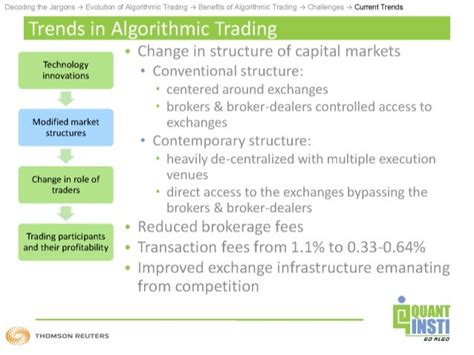- سبدخرید خالی است.
- ادامه خرید
The Evolution of Algorithmic Trading in the Cryptocurrency Space
The Evolution of Algorithmic Trading in the Cryptocurrency Space
Algorithmic trading has become a dominant force in the cryptocurrency market, revolutionizing the way traders and investors interact with digital assets. Over the past decade, algorithmic trading has evolved significantly, driven by technological advancements, changing regulatory environments, and the growing demand for efficient trading solutions.
The Early Days of Algorithmic Trading (2010-2015)
The concept of algorithmic trading dates back to the early 2000s, when pioneers such as Larry Swanson and John McAfee introduced the idea of using algorithms to automate trading. In the cryptocurrency space, this was largely limited to niche trading platforms and experimental projects. However, as the market grew and regulatory scrutiny intensified, the need for more robust and compliant algorithmic trading solutions became apparent.
The Rise of Exchange-Traded Funds (ETFs) and Crypto Exchange Listings
In 2011, the first cryptocurrency ETFs were launched in Canada, allowing investors to buy and sell Bitcoin and other altcoins on traditional exchanges. This marked a significant milestone for algorithmic trading as it demonstrated the viability of decentralized exchange-traded products.
As the cryptocurrency market expanded, more crypto exchange listings followed suit, providing a platform for traders to automate trades using algorithms. The emergence of popular platforms such as Binance, Kraken, and Coinbase fueled the growth in the field, making it easier for investors to access algorithmic trading solutions.
Technology Advances (2015-2020)
The past five years have seen tremendous advances in technology that have accelerated the evolution of algorithmic trading. Some key developments include:
- FPGA-based chips: The introduction of Field-Programmable Gate Arrays (FPGAs) has enabled the development of more powerful and efficient algorithms for cryptocurrency trading.
- GPU acceleration: Graphics processing units (GPUs) have become a staple in the algorithmic trading ecosystem, offering unparalleled processing power and speed.
- Cloud computing: The rise of cloud-based infrastructure has made it easier to deploy and manage algorithmic trading systems on a large scale.
- Machine learning: Advances in machine learning have enabled more sophisticated risk management and optimization algorithms for cryptocurrency trading.
Regulatory frameworks and compliance
The rise of algorithmic trading has also led to increased regulatory scrutiny, with governments around the world introducing new regulations and guidelines to ensure market stability and safety. Key developments include:
- MiFID II: The European Union’s Markets in Financial Instruments Directive (MiFID II) set a benchmark for regulation of the financial industry in the EU.
- SEC Regulations
: In the US, the Securities and Exchange Commission (SEC) has introduced new regulations to address cryptocurrency trading platforms.
- KYC/AML Requirements: Increased compliance requirements have forced cryptocurrency exchanges to implement Know Your Customer (KYC) and Anti-Money Laundering (AML) checks.
Challenges and Future Directions

Despite these advances, algorithmic trading in the cryptocurrency space still faces significant challenges:
- Regulatory Uncertainty: The regulatory landscape is constantly evolving, making it difficult for traders to navigate and optimize their strategies.
- Cybersecurity Risks: Algorithmic trading systems are vulnerable to cyber threats, which can lead to significant financial losses and reputational damage.
- Scalability Issues: As the cryptocurrency market continues to grow, algorithmic trading platforms must be able to scale to meet demand without compromising performance.
